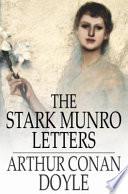“The unexpected has happened so continually in my life that it has ceased to deserve the name.”
Source: The Stark Munro Letters

The Stark Munro Letters is a novel by British author Sir Arthur Conan Doyle first published in 1895 by Longmans, Green & Co. in London, England.
“The unexpected has happened so continually in my life that it has ceased to deserve the name.”
Source: The Stark Munro Letters
The Stark Munro Letters (1894)
Context: The more we progress the more we tend to progress. We advance not in arithmetical but in geometrical progression. We draw compound interest on the whole capital of knowledge and virtue which has been accumulated since the dawning of time. Some eighty thousand years are supposed to have existed between paleolithic and neolithic man. Yet in all that time he only learned to grind his flint stones instead of chipping them. But within our father's lives what changes have there not been? The railway and the telegraph, chloroform and applied electricity. Ten years now go further than a thousand then, not so much on account of our finer intellects as because the light we have shows us the way to more. Primeval man stumbled along with peering eyes, and slow, uncertain footsteps. Now we walk briskly towards our unknown goal.
The Stark Munro Letters (1894)
Context: When you look closely it is a question whether that which is a wrong to the present community may not prove to have been a right to the interests of posterity. That sounds a little foggy; but I will make my meaning more clear when I say that I think right and wrong are both tools which are being wielded by those great hands which are shaping the destinies of the universe, that both are making for improvement; but that the action of the one is immediate, and that of the other more slow, but none the less certain. Our own distinction of right and wrong is founded too much upon the immediate convenience of the community, and does not inquire sufficiently deeply into the ultimate effect.
“Now we walk briskly towards our unknown goal.”
The Stark Munro Letters (1894)
Context: The more we progress the more we tend to progress. We advance not in arithmetical but in geometrical progression. We draw compound interest on the whole capital of knowledge and virtue which has been accumulated since the dawning of time. Some eighty thousand years are supposed to have existed between paleolithic and neolithic man. Yet in all that time he only learned to grind his flint stones instead of chipping them. But within our father's lives what changes have there not been? The railway and the telegraph, chloroform and applied electricity. Ten years now go further than a thousand then, not so much on account of our finer intellects as because the light we have shows us the way to more. Primeval man stumbled along with peering eyes, and slow, uncertain footsteps. Now we walk briskly towards our unknown goal.
The Stark Munro Letters (1894)
Context: The more we progress the more we tend to progress. We advance not in arithmetical but in geometrical progression. We draw compound interest on the whole capital of knowledge and virtue which has been accumulated since the dawning of time. Some eighty thousand years are supposed to have existed between paleolithic and neolithic man. Yet in all that time he only learned to grind his flint stones instead of chipping them. But within our father's lives what changes have there not been? The railway and the telegraph, chloroform and applied electricity. Ten years now go further than a thousand then, not so much on account of our finer intellects as because the light we have shows us the way to more. Primeval man stumbled along with peering eyes, and slow, uncertain footsteps. Now we walk briskly towards our unknown goal.